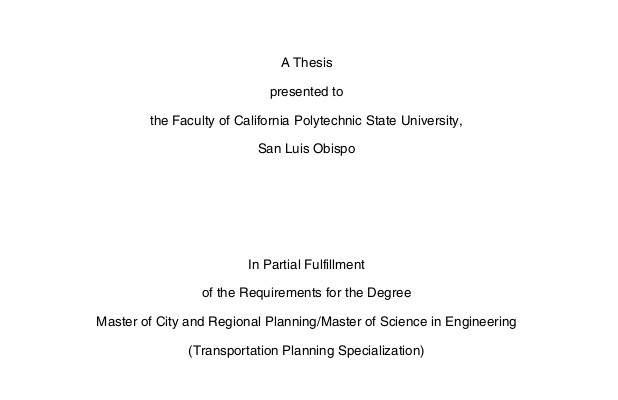Automated vehicles: a guide for planners and policymakers [Master Thesis] / by Charlie Coles. – San Luis Obispo : California Polytechnic State University, April 2016. – 93 p.
Automated vehicles: a guide for planners and policymakers [Master Thesis] / by Charlie Coles. – San Luis Obispo : California Polytechnic State University, April 2016. – 93 p. [formato PDF, 539 kB].
Master thesis of Charlie Coles, presented to the Faculty of California Polytechnic State University, San Luis Obispo, in partial fulfillment of the requirements for the Degree Master of City and Regional Planning/Master of Science in Engineering (Transportation Planning Specialization).
Automated vehicles are those which are capable of sensing their environments in order to perform at least some aspects of the safety-critical control (like steering, throttling, or braking) without direct human input. As a guide for planners and policymakers, the objective of this thesis is to develop a strong foundation for anticipating the potential impacts resulting from advancements in vehicle automation. To establish the foundation, this thesis uses a robust qualitative methodology, coupling a review of literature on the potential advantages and disadvantages of vehicle automation and lessons from past innovations in transportation, with recent trends of the Millennial Generation, carsharing services, and a series of interviews with thought-leaders in automation, planning, policymaking, transportation, and aviation. Five significant findings emerged from this thesis: (1) the impacts of vehicle automation differ depending on one’s visions of what automation means, how it is implemented, what the automation does, and where it operates; (2) current limitations of vehicle automation to perform all aspects of the dynamic driving task in all driving conditions make it difficult to move from level-4 to level-5 automation; (3) level-5 automation is required to have any effect on carsharing, mobility, and quality of life; (4) assuming effective planning and policymaking techniques, housing preferences, urban growth, and increases in total VMT will likely not be significantly impacted by vehicle automation; (5) human drivers may never be allowed to disengage their attention from a partially-automated vehicle, specifically in applications where drivers are expected to reengage their attention in safety-critical situations. From the perspective of understanding the bigger picture, this thesis developed a proposed future scenario of vehicle automation in the next five to ten years that is used to suggest guiding principles for policymakers, and key recommendations for planners, engineers, and researchers.
